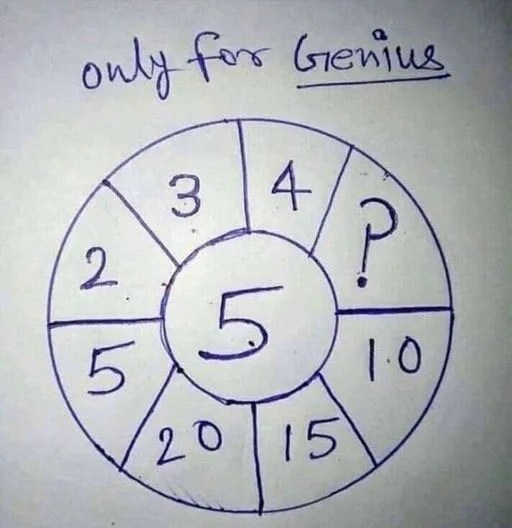
Imagine the sheer excitement sweeping across the internet as users try to crack a puzzle that has left many baffled. It sounds intriguing, doesn’t it? At first glance, this riddle seems to be a simple math problem, but don’t be fooled. The deeper you dig, the more complex it becomes. Solving it requires not just logical thinking but a touch of creative genius.
The Riddle That’s Challenging Everyone
A sequence of numbers appears before us, whispering hidden secrets to those observant enough to decode them. The claim that this puzzle is “only for geniuses” isn’t just an exaggerated boast—it’s a bold challenge that invites the sharpest minds to prove their problem-solving prowess. Those who attempt it must navigate a mathematical maze that pushes their thinking beyond the obvious.
At first, it looks like just another math equation. However, once you start analyzing it, you’ll realize there are multiple paths leading to an answer. The real test isn’t simply getting a number—it’s about understanding how the numbers interact in ways that may not be immediately apparent.
Deciphering the Puzzle: Finding the “Correct” Answer
If you assume that this riddle is a straightforward multiplication problem, you’re only scratching the surface. There are actually two different ways to interpret the numbers, and each leads to a unique solution. Yes, you read that correctly—this puzzle has more than one valid answer!
Solution One: Using Multiplication
The first approach relies on multiplication. Consider this equation: 5 = 5 × ?. Your job is to determine the missing number. The only logical solution in this case is 1, since 5 × 1 = 5.
Now, let’s take a different angle. If we instead multiply 5 by 5, the result is 25. That gives us a completely different answer. But does that mean one is right and the other is wrong? Not necessarily. This is where things get interesting.
An Alternative Perspective: The Role of Division
When division enters the equation, a whole new perspective emerges. Take a look at this:
- If 5 = 5 ÷ ?, then the answer must be 1, since 5 ÷ 1 = 5.
- But if we flip it around and express it as ? ÷ 5 = 5, then the missing number must be 25 because 25 ÷ 5 = 5.
This elegant numerical dance showcases the duality of mathematical reasoning. The puzzle isn’t just about finding an answer—it’s about discovering multiple paths to arrive at different solutions.
So, which method did you use? Did you approach it through multiplication, or did you rely on division? The answer depends on how your mind processes the relationships between numbers.
Thinking Beyond the Numbers: A Lesson in Lateral Thinking
While this puzzle may seem like a fun mathematical brain teaser, it’s actually an exercise in lateral thinking. What does that mean? Lateral thinking is the ability to view problems from unconventional angles, breaking free from rigid thought patterns. This skill is highly valued not only in mathematics but in everyday problem-solving as well.
The beauty of this riddle is that it transforms what appears to be a simple math equation into a mind-bending exploration of logic, perception, and creative reasoning. It reminds us that intelligence isn’t just about knowing formulas or memorizing numbers—it’s about flexibility in thinking.
Why This Puzzle Is More Than Just a Math Problem
This puzzle resonates with so many people because it challenges us to rethink how we interpret problems. It highlights the importance of questioning assumptions and considering multiple perspectives. Whether you solved it using multiplication, division, or a mix of both, the real value comes from the mental workout it provides.
Engaging with challenges like this sharpens cognitive flexibility, a skill that’s essential in fields ranging from mathematics to business strategy to creative problem-solving. The ability to see beyond the obvious and explore alternative solutions can make a huge difference in how we tackle complex real-world problems.
The Takeaway: Embrace the Challenge
If this puzzle has taught us anything, it’s that intelligence is more than just memorizing rules—it’s about how we apply them in different situations. Those who excel at lateral thinking recognize that there’s often more than one way to reach a solution. The next time you come across a tricky problem, don’t just look for the fastest answer—explore the different ways it can be approached. You might be surprised at what you discover.
So, what was your answer? Did you find one solution, or did you see both? No matter which path you took, the most important takeaway is the lesson in flexible thinking. And who knows? The next time you encounter a perplexing challenge, you might just approach it with a fresh perspective that sets you apart from the rest.
This puzzle is more than just a viral internet sensation—it’s a reminder of how fun and rewarding it can be to stretch our mental muscles. Keep questioning, keep exploring, and never stop challenging your own thinking!





